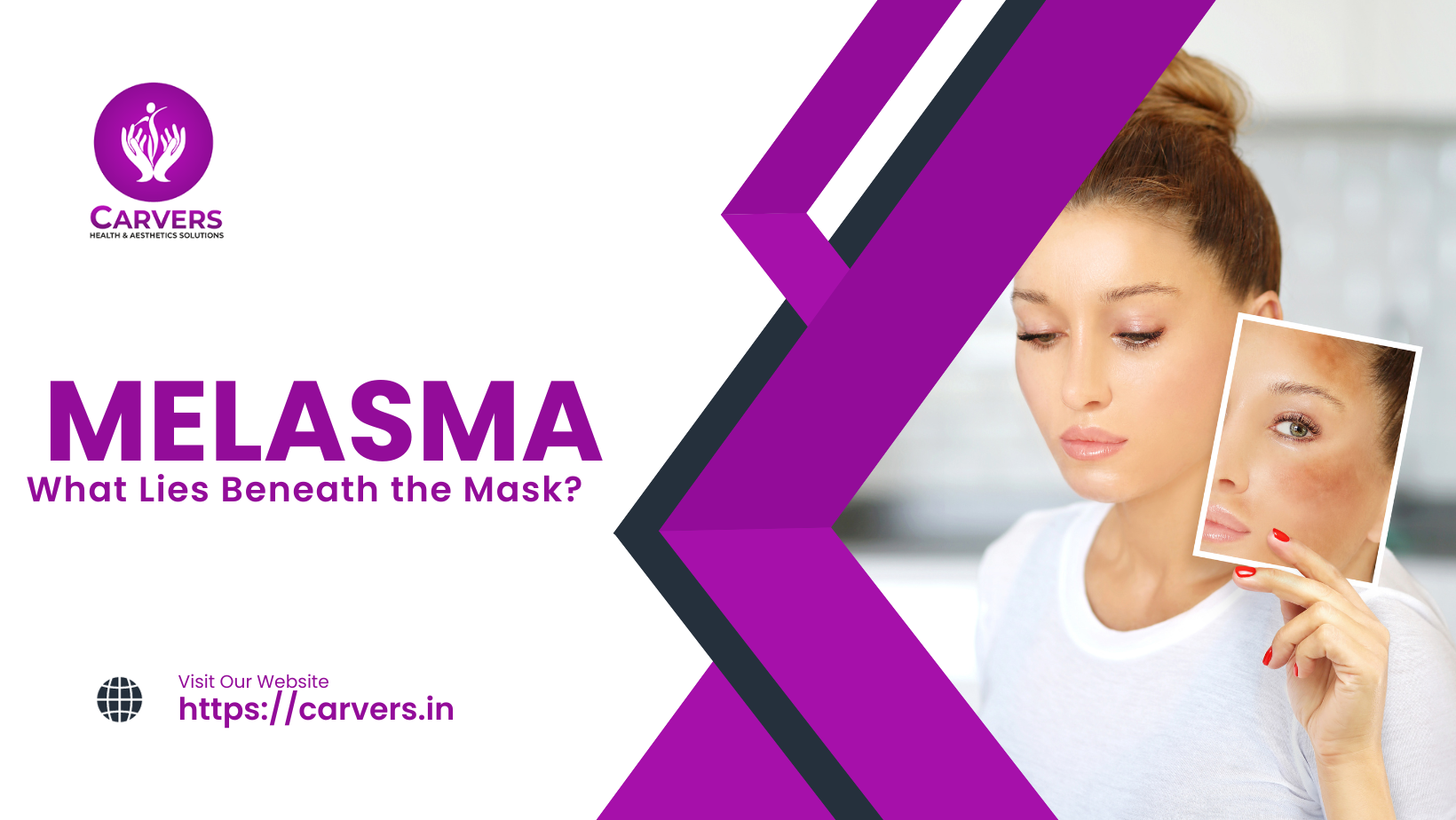
MELASMA: What Lies Beneath the Mask?
Melasma, often referred to as the “mask of pregnancy,” is a common skin condition that affects people of all genders and backgrounds. This dermatological concern is characterized by the development of brown or gray-brown patches on the face, typically on the cheeks, forehead, nose, and upper lip. While melasma is generally harmless, it can have a significant impact on an individual’s self-esteem and confidence. In this blog, we’ll explore what melasma is, its causes, and how to manage and treat it.
Understanding Melasma
Melasma is a skin condition that primarily affects the appearance of the face, though it can sometimes occur on other areas of the body exposed to the sun. It is characterized by the development of symmetrical, hyperpigmented patches that vary in size and color. These patches often have a well-defined border and can resemble a mask, which is why it’s often called the “mask of pregnancy.” Melasma does not cause any physical discomfort, but the visible appearance of these patches can be distressing for many.
Common Causes of Melasma
While the exact cause of melasma is not fully understood, several factors are believed to contribute to its development:
1. Hormonal Changes: Hormonal fluctuations play a significant role in the onset of melasma. This is why it is often associated with pregnancy, birth control pills, and hormone replacement therapy. Pregnancy-related melasma is referred to as chloasma or the “mask of pregnancy.
2. Sun Exposure: Exposure to ultraviolet (UV) radiation is a key trigger for melasma. Sunlight stimulates the production of melanin, the pigment responsible for skin color. Prolonged sun exposure without adequate sun protection can worsen melasma.
3. Genetics: There is a genetic predisposition to melasma. If a family member has melasma, you may be at a higher risk of developing it as well.
4. Hormonal Disorders: Conditions like polycystic ovary syndrome (PCOS) and thyroid disorders can affect hormone levels and increase the likelihood of developing melasma.
5. Cosmetic Products: Certain cosmetics and skincare products, particularly those containing harsh ingredients, can trigger or exacerbate melasma.
Managing and Treating Melasma
While melasma is generally a benign condition, it can be challenging to treat and manage effectively. Here are some approaches that can help:
1. Sun Protection
Preventing further melasma development and worsening requires diligent sun protection:
– Use Sunscreen: Apply a broad-spectrum sunscreen with at least SPF 30 daily, even on cloudy days. Reapply every two hours if you’re outdoors.
– Protective Clothing: Wear wide-brimmed hats, sunglasses, and clothing that covers your skin when you’re exposed to sunlight.
– Seek Shade: Stay in the shade during peak sun hours, typically between 10 a.m. and 4 p.m.
2. Topical Treatments
Various topical treatments can help lighten melasma patches over time:
– Hydroquinone: This is a common skin-lightening agent that can reduce the appearance of melasma. It’s available both over-the-counter and by prescription.
– Tretinoin (Retin-A): Tretinoin can improve melasma by promoting skin cell turnover. It is available by prescription.
– Corticosteroids: Topical corticosteroids may be prescribed to reduce inflammation and lighten melasma patches.
– Cosmeceuticals: Skincare products with ingredients like niacinamide, kojic acid, and licorice extract can be used to manage melasma.
3. Chemical Peels
Chemical peels involve applying a chemical solution to the skin, which exfoliates the top layer and encourages the growth of new, healthy skin. Superficial peels can help improve the appearance of melasma by reducing pigmentation.
4. Laser Therapy
Laser treatments, such as fractional laser therapy and intense pulsed light (IPL) therapy, can target the pigmented areas of melasma and stimulate collagen production, leading to improved skin texture and reduced pigmentation.
5. Microneedling
Microneedling uses tiny needles to create controlled micro-injuries in the skin, stimulating collagen and elastin production. This can help reduce the appearance of melasma and improve overall skin texture.
6. Combination Therapy
A dermatologist may recommend a combination of treatments to manage melasma effectively. These combinations can include topical treatments, chemical peels, and laser therapy.
7. Lifestyle and Cosmetics
– Avoid Harsh Skincare Products: Choose gentle skincare products that do not irritate the skin and exacerbate melasma.
– Makeup: High-quality makeup and concealers can help cover melasma patches and boost your confidence.
– Cosmetic Camouflage: Consider consulting with a dermatologist or makeup artist for specialized advice on concealing melasma.
Conclusion
Melasma, the “mask of pregnancy,” can affect anyone, regardless of gender or age. While it may not pose a health risk, its visible appearance can impact an individual’s self-esteem. However, with the right approaches and a consistent skincare routine, you can effectively manage and reduce the appearance of melasma. Remember that results may take time, and it’s essential to be patient and persistent in your efforts to maintain healthy and beautiful skin. If you’re struggling with melasma, consult a dermatologist for a tailored treatment plan that suits your specific needs and goals.
